One of the most fashionable formations of the last decade, the 3-5-2 is a formation that presents incredibly universal applications and an almost infinite number of interpretations. From Conte’s high pressing system at Juventus and Mazzari’s counter-attacking set-up at both Watford and Udinese to Van Gaal’s experimental fluid/rigid systems. The player roles and movement in the 3-5-2 can be as diverse as the ethnicity proportions in London and to say that this is a formation that will play a certain, pre-determined style of football is a big mistake. In this piece I will cover the stages of thought that led me to implementing a system based on the 3-5-2 formation as well as some key findings and developments as I progressed with that.
As I was faced with the impossible in my first year managing Sparta Bucharest, I had to come up with a system that almost had to bear the promise of over-achievement – we were predicted to finish 17th so I needed to come up with something good or nothing at all. Having analysed the squad I had at my disposal I came across the following key issues:
– My two best players are an AMC and a DM, the first being incredibly technically gifted for a squad of our level and the second being a very hard-working player with very good physique and decent tactical understanding of the game. The rest of the squad is quite literally at least two times worse than these two in terms of ability so the new system will have to be focused on exploiting them as much as possible.
AM- Carlo Casap
DM – Razvan Ciobanu

the decision regarding the AM was pretty simple – he is the only player in this squad capable of creating something and technical enough to execute that so I’ve decided his role is set as the AP of this team. Looking around the squad, I’ve realized our forwards aren’t good enough to support each other as they lack some basic passing/teamwork attributes, never mind vision and decisions. What this meant is that I need the AP to support them closer and potentially get involved in the final third himself given he is the second best attacking player in the squad too. Okay, so there’s the front three sorted out:

– we have the DLF holding up the ball to create space for the AP(A) to run into, as well as acting as a deeper passing option for the AF
– we have a good variety of roles in these three as, in other terms we’ve got a creator, a target man(ish) and a forward to spearhead the attacks
Having gone through squad analysis, I realized that most of my fullbacks are actually more suited to wingbacks and that pretty much all of them are absolutely terrible at defending. This is my best wingback:
Incidentally, our central defenders are pretty decent and we’re stocked with numbers in that position. Okay, that’s easy then, we’ll set on a back three, using the wingbacks higher up the pitch to exploit their pace (the only attribute they’ve got that can make any difference) Having mentioned that I plan to use Ciobanu as a DM and focus on having a system that is articulated to the position of a team that will go in as underdogs in every match of the league, the final set-up looks like this:
Formation Support/Attack duty balance
the formation reflects our lack of overall physique as a very young squad as we aim to defend via controlling as much space as possible as well as through a concentration of numbers in defence rather then having to rely on one on one duels. The front three would perform the main attacking duties of the squad, with the wingbacks providing width and additional numbers in all phases of play – defence, possession and attack. Take note of the balance between supporting/attacking players as this is crucial for having a balanced set-up as well as creating coherent movement in the attacking phase. The arrows highlight the potential attacking players that could benefit from players on support roles.
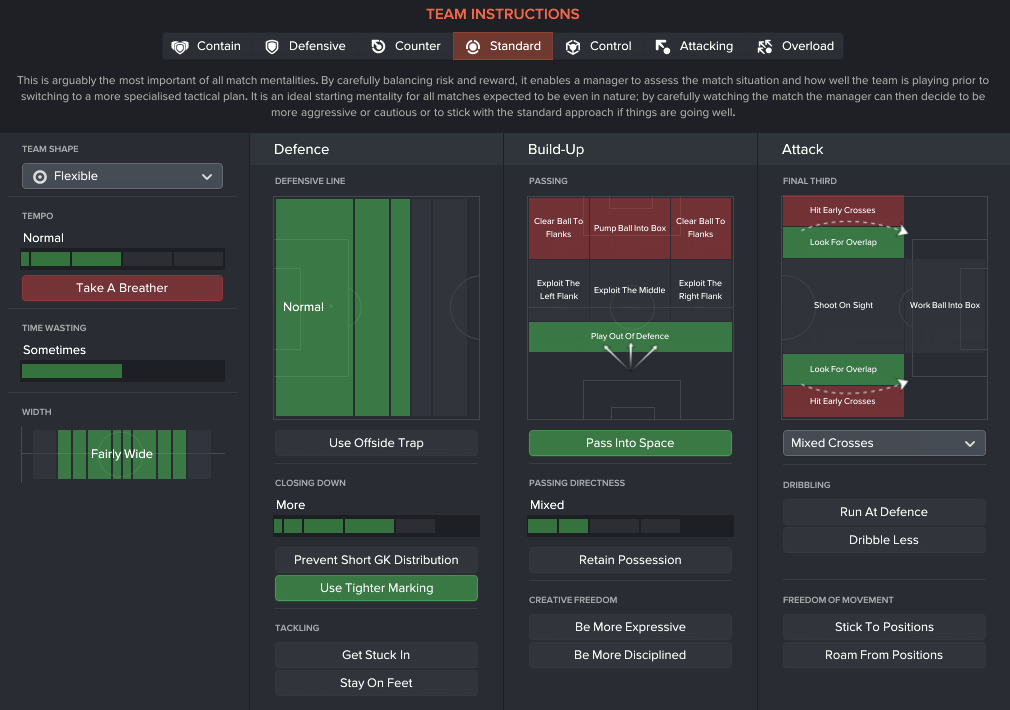
The TI’s are very simple as we are not capable of performing incredibly complex systems due to our low tactical understanding of the game as a team. I’ve chosen a standard mentality with a flexible team shape as I want to play in a balanced manner, relying on specific players doing their jobs in their respective departments when called upon and maintaining good team shape in all phases of play. I will play fairly wide due to the above mentioned already high concentration of numbers in the defensive strata, as well as to avoid having the front three too narrow, as I need them to have space to exploit. I want to play out of defence and use our DM-CM-AP as the tunnel of our passing game from defence to attack. I have ticked on ‘look for overlap’ because this has a very important effect: in that second or two that the player pauses waiting for the wingbacks to run forward the team gains two extra players in the build-up/attacking phase. It also creates space in behind the opposition which the on-running wingback can exploit. Fairly normal defensive line and close down more so that we don’t venture too high up the pitch but neither invite too much pressure from the opposition. Use tighter marking as we have a system that will, in most cases outnumber the opposition numerically when defending.
Having tinkered with player instructions, this is the movement that I expect from my players when the team is set to transition to attack:
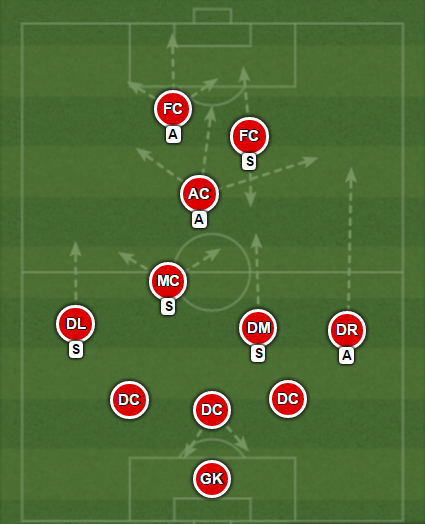
You’ve probably noticed the big forward arrow drawn from the DR and the DM. While the first is a WB(A) and that makes perfect sense, what about the latter? Well, having thought about how I want to create variety in my system and given that the right wing-back will, at most times be in a very advanced position up the pitch, the centre-right of the pitch remains empty if the DM doesn’t advance forward enough. This has prompted me to apply the following PI’s to the player:

the combination of these instructions should make our DM a player that ventures forward to support the team in attacking moves whilst staying disciplined and restraining from over-exploiting his limited technical ability. Additionally, his movement high up the pitch and the AP’s involvement in the final third get the team to set out as a 3-4-3 when attacking. Having played a few matches and having fallen in love with the movement and duties he performs with these instructions, I came up with that fancy tagline mentioned in the title for this role:
The Deep Lying Box to Box midfielder:

here you can notice how high the DM(no10) ventures, as he is positioned in the same line as the CM(S) when the team attacks, making the team position itself in a 3-4-3/3-4-1-2 shape in attack. As a result the RWB and the AP benefit from much better support and the central area of the pitch is being pressed in a balanced manner.
the DM acting as a shield for the back 5, providing the first body on the line for potential threats from the opposition forward or AML. In this screen you can also notice why having a wider team setting is beneficial when deploying a higher number of players in one strata of the game, as we cover the entire width of the pitch with our back 5. You can also notice the ‘passing tunnel’ formed by the DM-CM-AP, which would allow for the ball to be moved up the pitch faster in case the ball is won back.
The DM performing the mezz’ala role: The biggest worry for a 3-5-2 is when one of the defenders is dragged infield, or gets lost marking/challenging players on the flanks. This leaves the half-spaces very vulnerable and the following screenshot illustrates the perfect scenario of that happening: the RCB is dragged out wide by the opposition AML while the RWB who is on attacking duty is caught up the pitch following an attacking move. This creates a massive gap in the half space for the opposition to exploit and they waste little time in doing so: Blanaru (no18) makes a great pass (red line) over the top to the forward (no26) making a run into that gap. Our DM traces the player into that area (centre-right) and the pressure he puts on the forward allow the RCB and CB to track back in time to deal with the situation. This kind of movement is typical of the mezz’ala role in Italy, which literally means ‘half-winger’ in italian and is usually attributed to midfielders playing on the sides of a 3-man midfield, having to cover the half spaces and the wings occasionally. Think Pogba drifting to the left in Allegri-s 4-3-1-2 or Vidal to the right in Conte’s 3-5-2.
this is the same move after 3-4 seconds – the covering CB disposseses the forward and drops deeper to look for a pass while the DM drops between the RCB and the LCB to maintain the pressure on the forward as well as act as a potential passing option
the DM acting as a deep-lying passing option for the team when camped inside the opposition box
the DM getting into the final third – a counter-attacking move which takes us 7 seconds to transition from defence to atttack sees the DM enter the box in the same line as the DLF and the AF and even higher up the pitch then the AP, which is what a typical box-to-box midfielder would do in this situation. Notice how far back the CM(s) is despite not being instructed to hold position, as this shows how much the ‘get forward’ instruction actually influences the DM’s movement. The pink’ish circle shows the DM’s initial starting position from the defensive position and the great run he has made in this move.
this set of movements from the DM has enabled us to create a number of different shapes in various situations of play thus adding further variety to our system. As you can notice in the above screenshot, we have 4 players entering the box in this attacking move and two supporting wingbacks providing width from either side. That’s a great result in terms of one of the key strategic concepts of the game: have as many players as possible defending and as many as possible attacking. We have great coverage of width and space all over the pitch and are capable of exploiting either the midfield or the wings through both – short quick passing and high paced counter attacking via wings and crosses:
Our DM, Ciobanu, is one of the most successful players in the league in his combative duties as well as averaging a 84% passing accuracy, which for this level is kind of out of this world.
I suppose this system is an illustration of achieving variety in the way your team plays without having players competent enough to perform individually complex duties. Instead, it is about maximizing the effect to which the best tasks that they can perform can be applied in a coherent system that will present the opposition with a number of surprises in terms of how it attacks. To say it has been fairly successful is an understatement:
League Media Prediction
From relegation candidates to promotion winners 🙂
Thanks for reading and follow me on twitter @LPQR_FM or support us by sharing our Facebook page



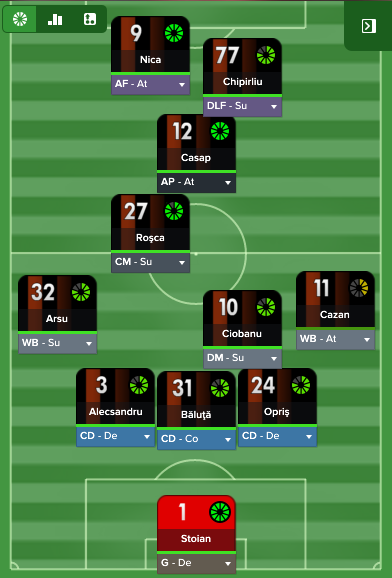

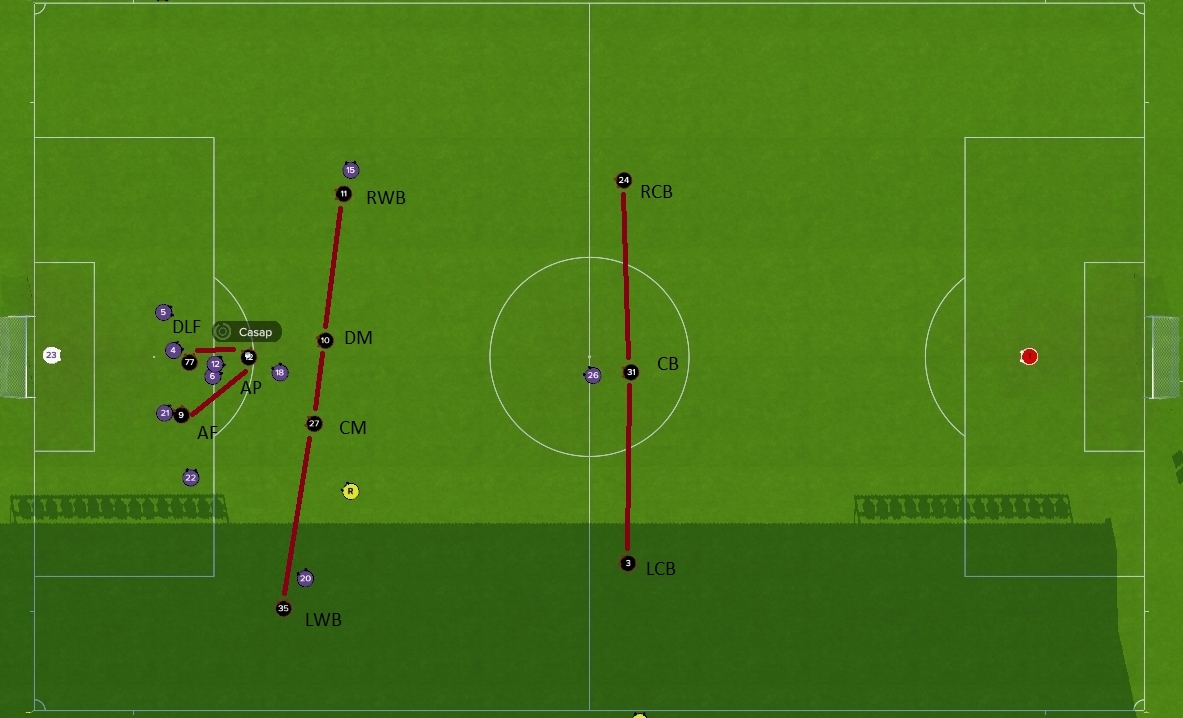

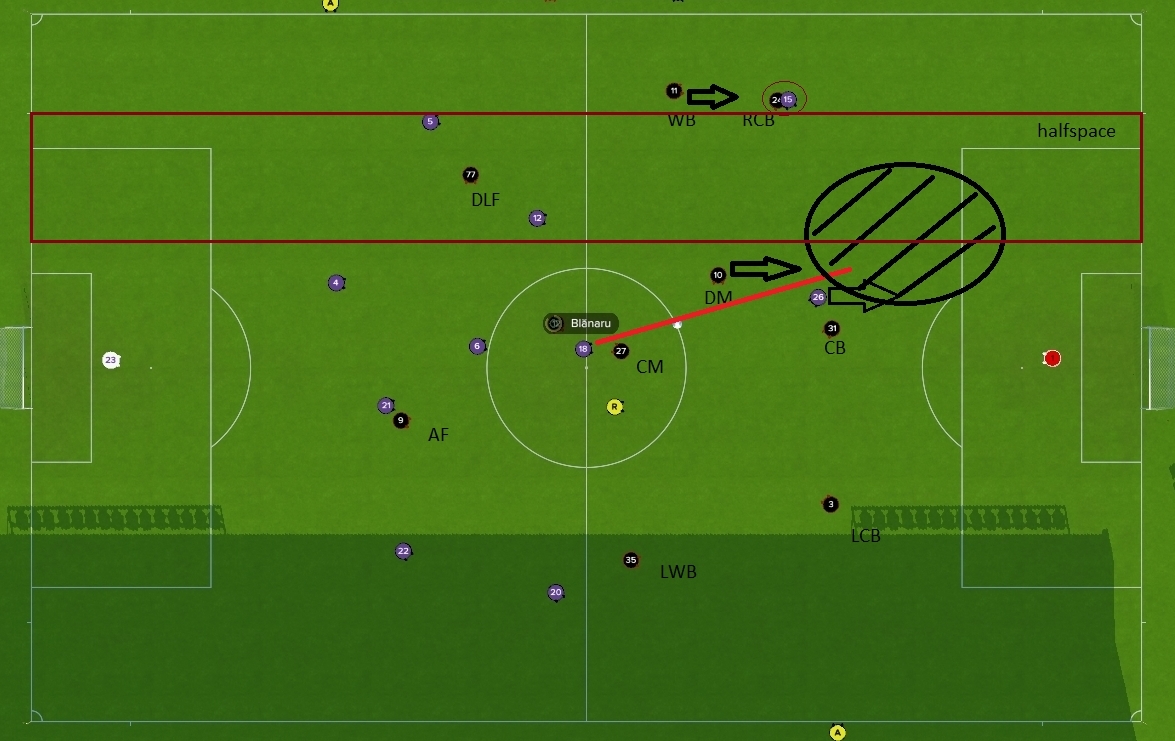

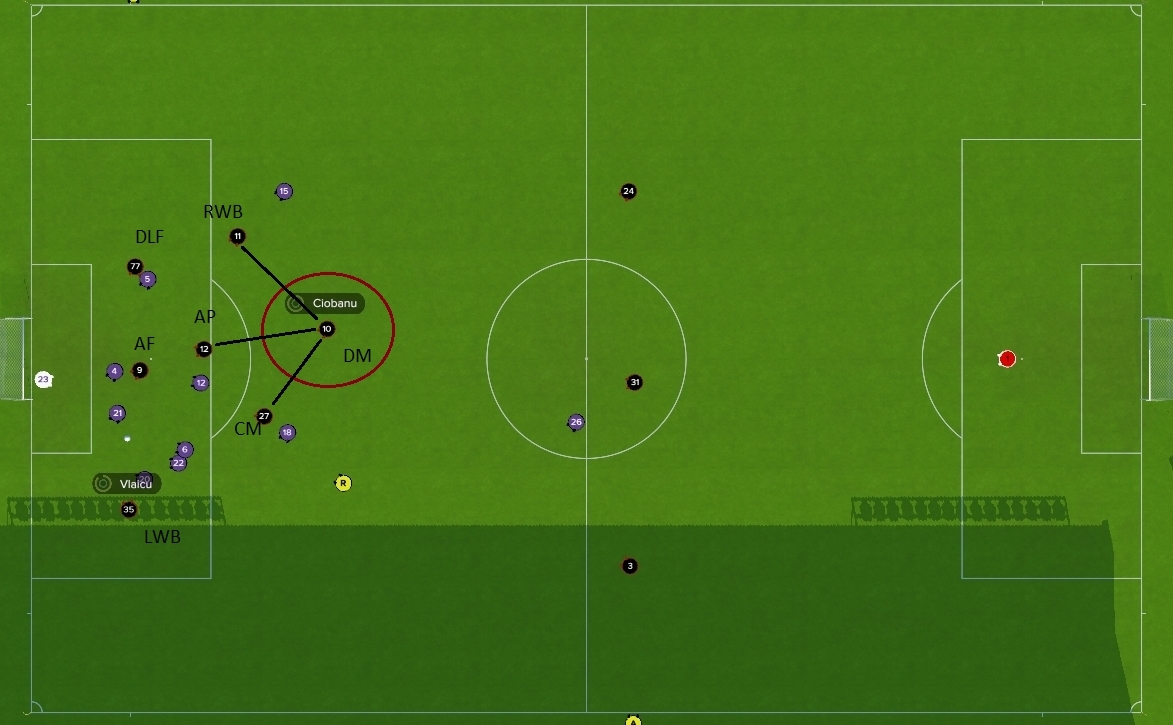



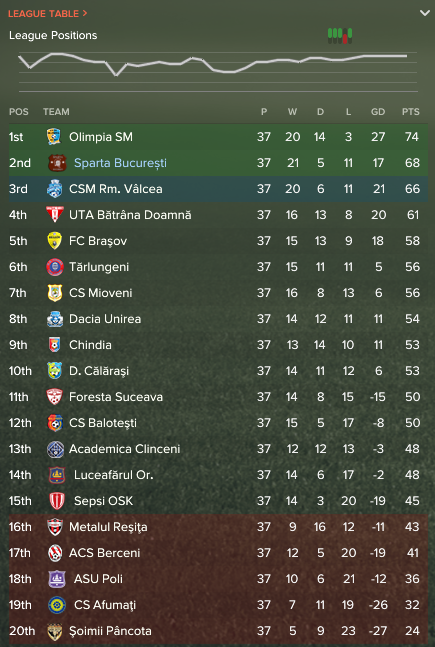
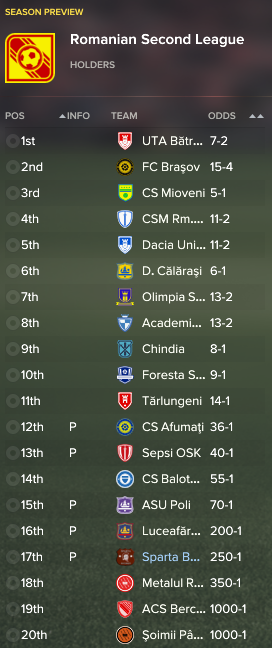
Good read, mate! 3-5-2 is a fantastic formation, love the three-man-midfield combined with three central defenders and two strikers.
LikeLike
yep, providing the wingbacks get in the right place at the right time it can be a 5 man midfield, 5 man defence and 4 man attack 🙂
LikeLiked by 1 person
Can I ask what other player instructions you have used, looking to use this with Chelsea
LikeLike
i think my wingbacks were instructed to stay narrow and my CM to be a bit more combative. The rest you should be able to implement yourself easily if you want to replicate a similar style to the one described here. Otherwise don’t be afraid to experiment for yourself, after all each team is suited to different kinds of football 😉
LikeLike
Hi
great job
do you have ant link to download this tactic?
thanks
LikeLike
hi LPQR
Great Job
can you put a link to download the tactic?
cheers
LikeLike
Another great post….keep them coming loving reading them
LikeLike
cheers 🙂
LikeLike